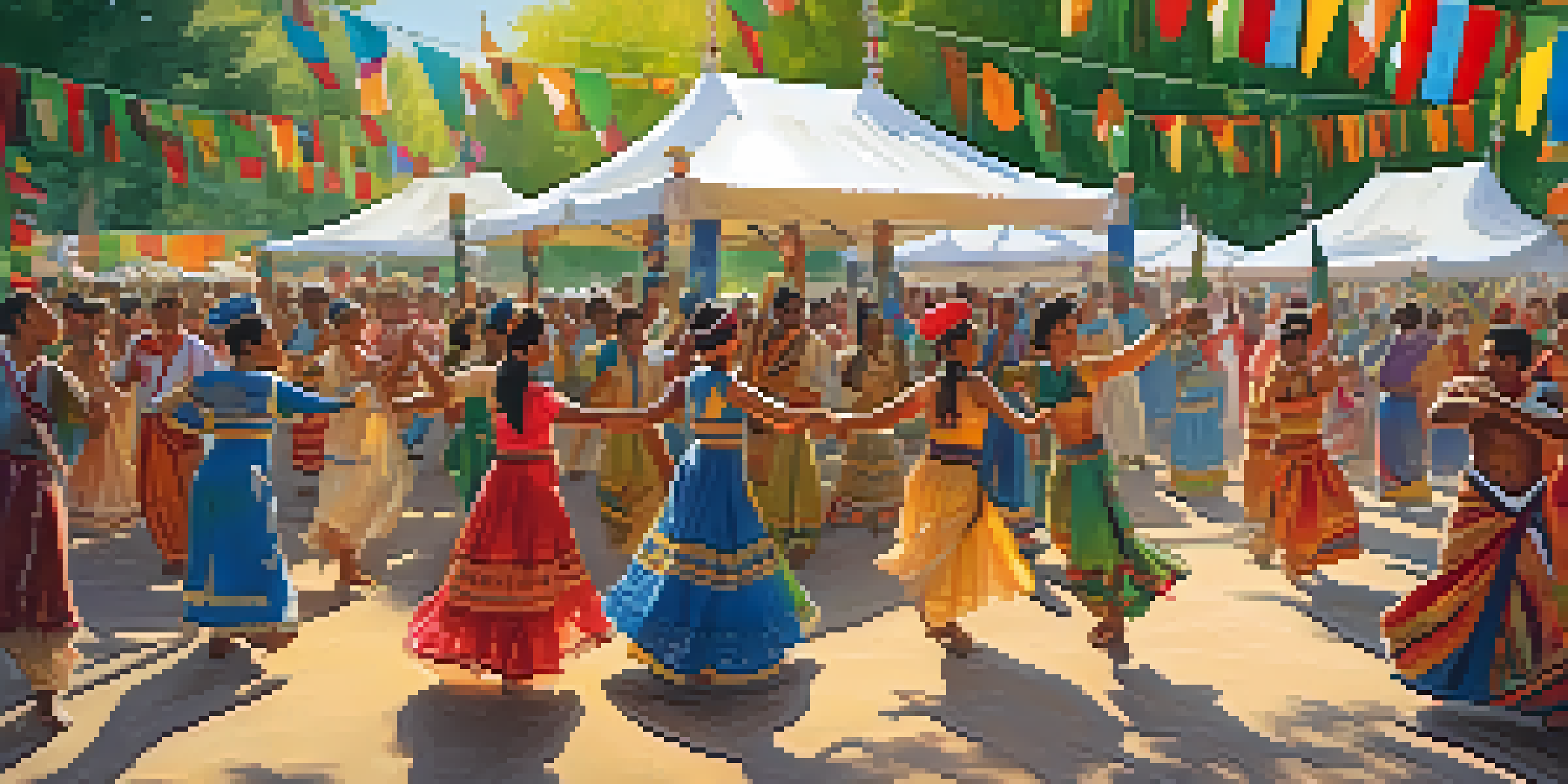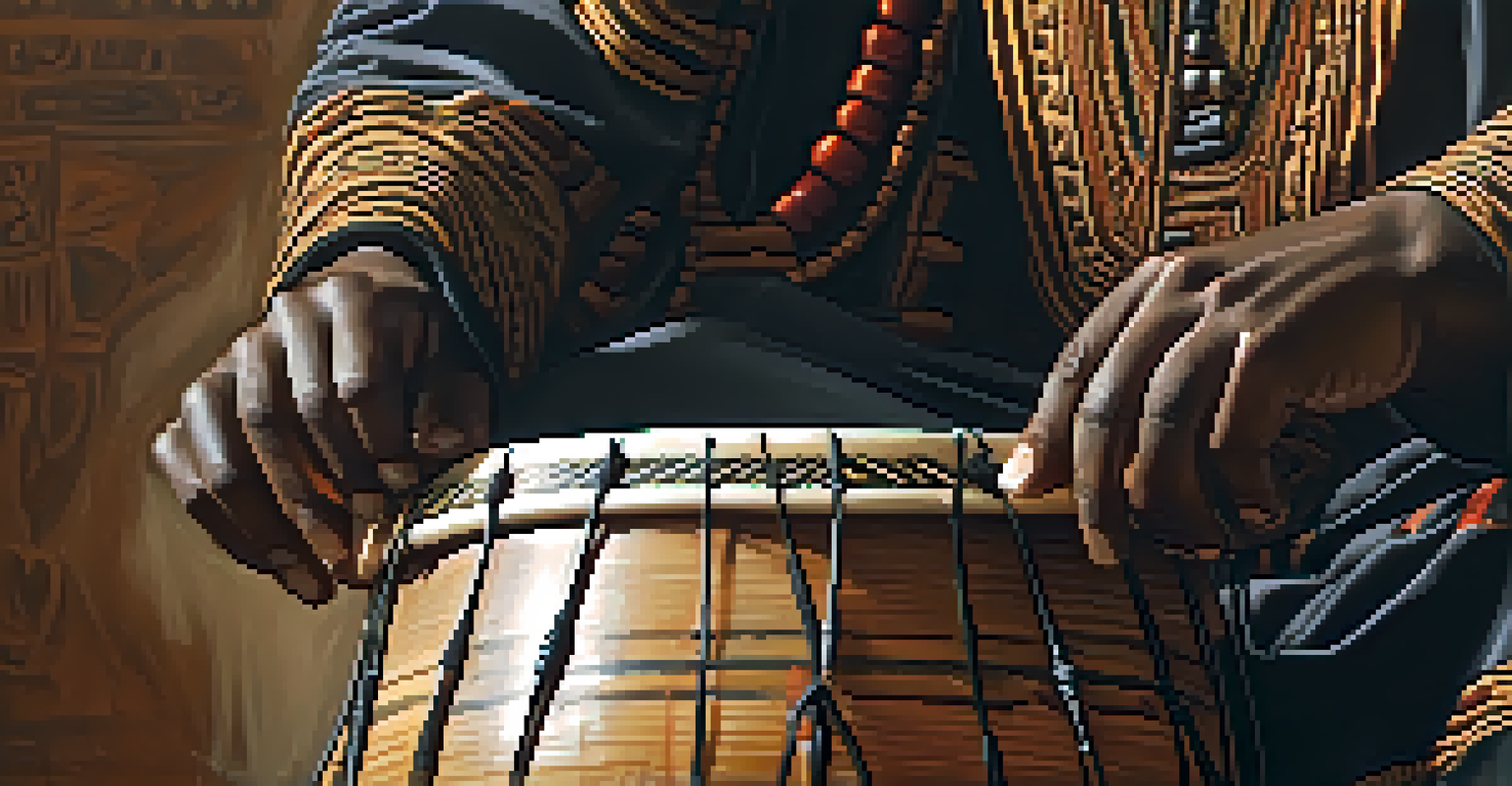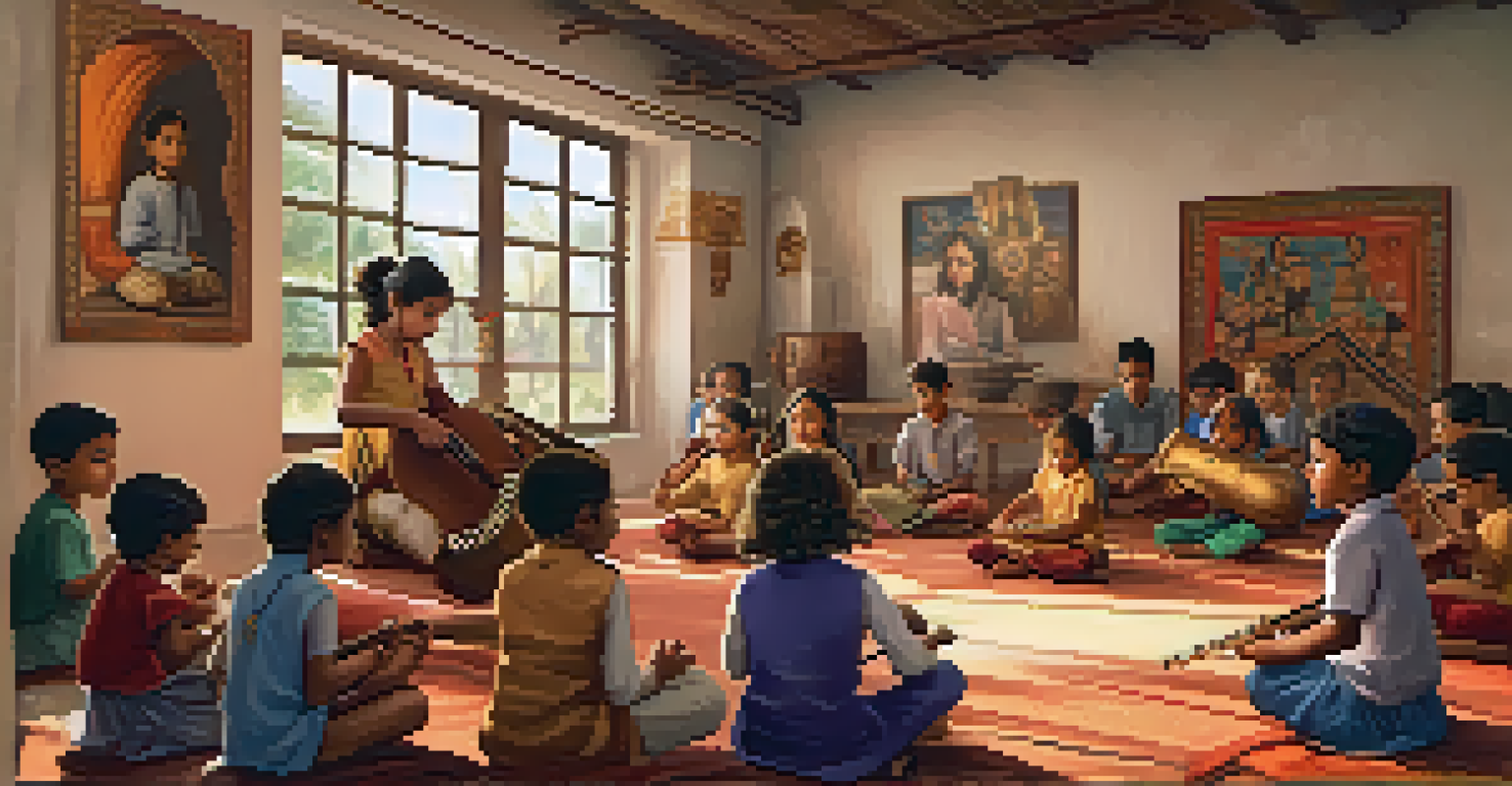Using Traditional Music to Bridge Cultural Divides

The Power of Music in Cultural Expression
Music has always been a universal language, capable of expressing emotions that words sometimes fail to convey. Traditional music, in particular, carries the weight of history, culture, and identity, allowing communities to share their stories and experiences. When we listen to a folk song, we are not just hearing melodies; we are connecting with the essence of a culture.
Music is the shorthand of emotion.
For example, consider the vibrant rhythms of African drumming, which tell tales of communal life and heritage. Similarly, the haunting notes of a Scottish bagpipe evoke a sense of pride and nostalgia for its people. These sounds create a bridge, inviting listeners to explore and appreciate diverse cultural backgrounds.
By engaging with traditional music, we can cultivate empathy and understanding, making it easier to navigate cultural divides. This musical exploration opens doors to conversations that might not otherwise occur, fostering a sense of unity in a world that often feels divided.
Cultural Festivals: A Melting Pot of Sounds
Cultural festivals serve as fantastic platforms for showcasing traditional music from various communities. These events unite people from different backgrounds, allowing them to experience the richness of each other's cultures through music and dance. For instance, at a multicultural festival, attendees might dance to samba from Brazil, listen to traditional Indian ragas, and enjoy the soothing sounds of Japanese koto music.

Such experiences not only entertain but also educate participants about the stories and traditions behind each musical genre. By immersing themselves in these cultural expressions, people can break down stereotypes and foster friendships across cultural lines. The shared joy and appreciation for music create a sense of belonging, regardless of one's origin.
Music as a Cultural Connector
Traditional music serves as a universal language that expresses emotions and connects communities through shared stories and experiences.
Moreover, these festivals often include workshops and interactive sessions, enabling attendees to learn about the instruments and techniques used in different cultures. This hands-on approach deepens understanding and appreciation, reinforcing the idea that music is a shared human experience.
Storytelling Through Traditional Music
Traditional music is more than just a collection of notes; it’s a form of storytelling that captures the essence of a culture. Each song often narrates tales of love, struggle, or celebration, providing insight into the values and history of a community. When we listen closely, we can glean lessons that transcend cultural boundaries.
The beautiful thing about music is that it transcends language.
Take the example of Native American music, where songs often reflect a deep connection to nature and spirituality. These narratives not only preserve the culture but also invite listeners to reflect on their relationship with the world. By sharing these stories through music, cultures can foster a deeper understanding of their unique perspectives.
As we embrace these narratives, we begin to see common themes that unite us as humans. This shared understanding helps to dismantle cultural barriers, making it easier to appreciate the diversity that exists within our global community.
The Role of Technology in Sharing Traditional Music
In today's digital age, technology plays a pivotal role in bridging cultural divides through music. Platforms like YouTube and Spotify allow traditional music from around the world to reach wider audiences, breaking geographical barriers. This accessibility means that people can explore and enjoy diverse musical traditions from the comfort of their homes.
For instance, a person in the United States can easily discover and enjoy traditional Irish music, while someone in Ireland might stumble upon the rich sounds of Brazilian bossa nova. These serendipitous encounters can spark curiosity and lead to a deeper exploration of different cultures. Additionally, social media enables musicians to connect with audiences directly, fostering global conversations around music.
Festivals Showcase Diversity
Cultural festivals provide vibrant platforms for people to experience and appreciate diverse musical traditions, fostering understanding and unity.
However, while technology enhances accessibility, it also presents challenges in preserving the authenticity of traditional music. It’s essential for listeners to engage respectfully and understand the cultural significance behind the music they encounter online.
Collaboration: Fusion of Musical Traditions
Collaboration between artists from different cultural backgrounds often leads to the creation of new, hybrid genres that celebrate diversity. When musicians fuse traditional sounds with contemporary styles, they create something beautiful that resonates with a broader audience. For example, the blending of African rhythms with jazz has resulted in a rich tapestry of musical innovation.
These collaborations not only introduce listeners to new sounds but also highlight the importance of cultural exchange. Each artist brings their unique background and perspective, enriching the creative process. This collaborative spirit can help dispel misconceptions and foster mutual respect among different cultural groups.
Moreover, such musical fusions can inspire future generations to appreciate and explore their cultural heritage while embracing influences from other traditions. This encourages a continuous dialogue between cultures, reinforcing the idea that music is a living, evolving art form.
Educational Programs: Teaching Cultural Appreciation
Educational programs focused on traditional music can play a significant role in bridging cultural divides. Schools and community centers can host workshops that introduce students to various musical traditions, teaching them about the cultural significance behind the sounds. By engaging with music from different cultures, students develop a richer understanding of the world around them.
For example, a classroom that incorporates lessons on African drumming not only teaches rhythm but also imparts knowledge about African history and values. This holistic approach fosters an appreciation for diversity and encourages students to see music as a tool for cultural connection. Such programs can also empower students to express their own cultural identities through music.
Technology's Role in Music Sharing
Digital platforms enhance accessibility to traditional music, allowing global audiences to explore and appreciate cultural sounds while also requiring respectful engagement.
Furthermore, as students learn to respect and appreciate different musical styles, they become more open-minded and empathetic individuals. This foundation of cultural understanding can contribute to a more harmonious society where differences are celebrated rather than feared.
Conclusion: The Future of Cultural Connection Through Music
As we look to the future, the importance of traditional music in bridging cultural divides cannot be overstated. It serves as a reminder of our shared humanity and the beauty of diversity. By engaging with and celebrating different musical traditions, we can foster understanding and respect in an increasingly connected world.
Incorporating traditional music into our lives—whether through festivals, collaborations, or educational programs—can help create lasting connections between cultures. By embracing these experiences, we not only enrich our own lives but also contribute to a more inclusive society.

Ultimately, music has the power to transcend boundaries and bring people together. As we continue to explore the world through sound, we can build bridges of understanding, one note at a time.